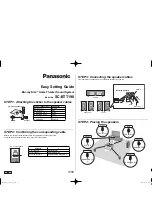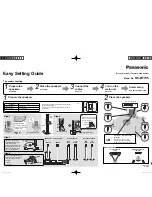C
O
N
N
E
C
T
M
O
D
E
19
Text fields for entering a name for the loud-
speaker and listing its location.
Press Wink with Light button to turn the
loudspeaker’s wink light on and off to aid in
identifying the loudspeaker and its location.
Output status indicators for each amplifier.
See Status Indicators below for details.
Output bargraph. “0” represents the maxi-
mum uncompressed output level; positive
values indicate how far the signal is over-
shooting into limiting; negative values indi-
cate the amount of headroom left before
the onset of limiting.
Press Wink with Audio to send a Tone sig-
nal or Pink Noise to the loudspeaker.
Mute button mutes the entire loudspeaker.
Press to restart the loudspeakers DSP in
the event of a malfunction.
Power button switches the amplifier(s)
between On and Standby. (turning AC
power on and off is an entirely manual
operation.
Input signal level bargraph; “0” indicates
the onset of input clipping. Analog inputs
clip at +12 dBu without the 10 dB input
pad, +24 dBu with the pad.
Listing of the loudspeakers model number
and the sample rate (either 48 kHz or 96
kHz) of its DSP. See Appendix lll for more
details.
Inv button inverts the input signal polarity;
glows green when signal is inverted. Use
with caution.
Amplifier temperature reading and
bargraph.
AutoSave indicator; indicates Save for a
brief period whenever a change is made to
show the change is being saved.
Volume control slider; adjust by grabbing
slider with mouse or by using up/down
arrows.Settings adjustable from “0” to -50
in 1 dB steps, then to -100 dB in one step;
settings below -8 dB prevent the loud-
speaker from reaching full output.
The vertical pane in each Properties window provides for loudspeaker identification and selected control features. See below for details.
Status Indicators:
The Thermal, Peak and Fail indicators above the output meter provide critical information on the array’s status. The
Peak indicator will flash yellow or red whenever the device’s peak limiter is triggered. It’s normal for the indicator to flash occasionally if
the loudspeaker is being used close to its rated output. Flashing frequently is a sign that the system volume needs to be turned down.
The Thermal indicator will start to flash yellow as the amplifer’s temperature approaches a preset level and will turn red if the temperature
continues to increase as a warning the amplifier is about to be shut down. The Fail indicator glows red when the amplifier has been shut
down by the protective circuitry. Heat related shutdowns will reset automatically after the amplifer cools down to a safe temperature.
As a further protective measure, the amplifier’s gain will gradually be reduced in response to overheating and/or to high an input level.
However, it’s best to manually reduce the input signal level (overall system volume) in response to distress signals.
Users Manual
IC-R
Users Manual
IC-R


















